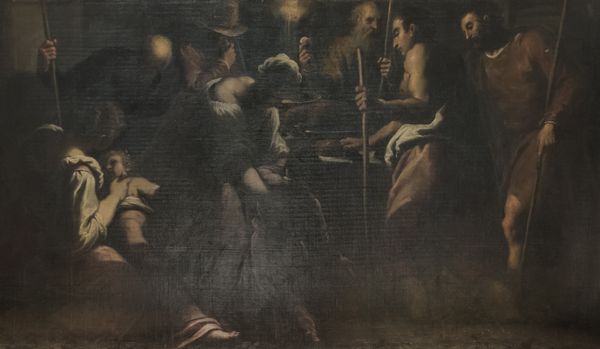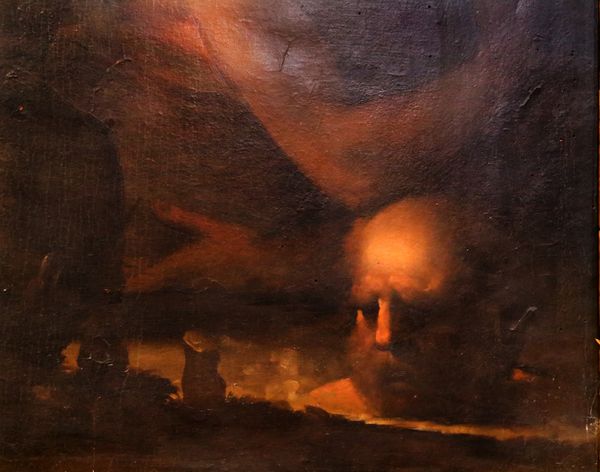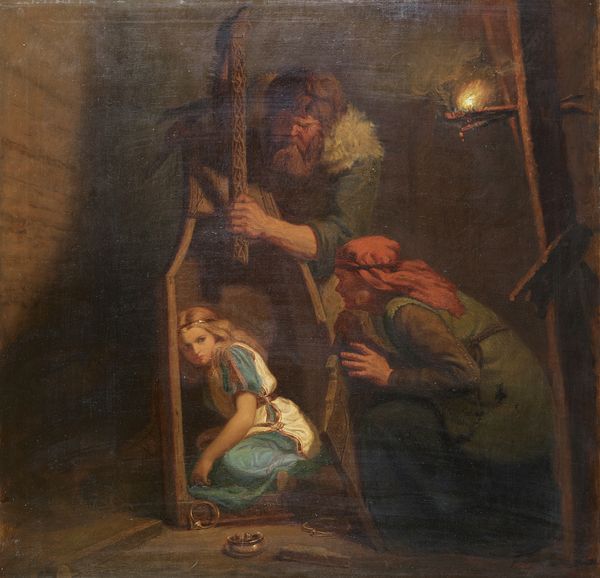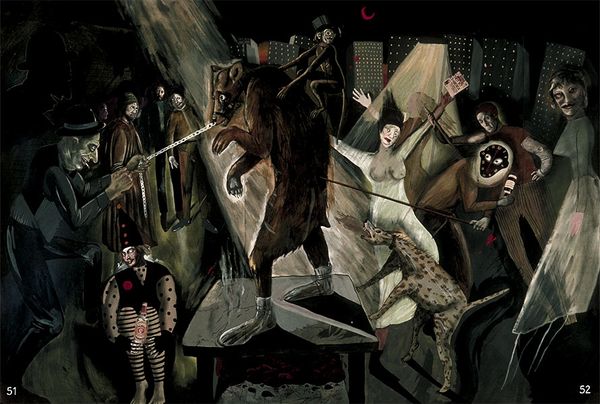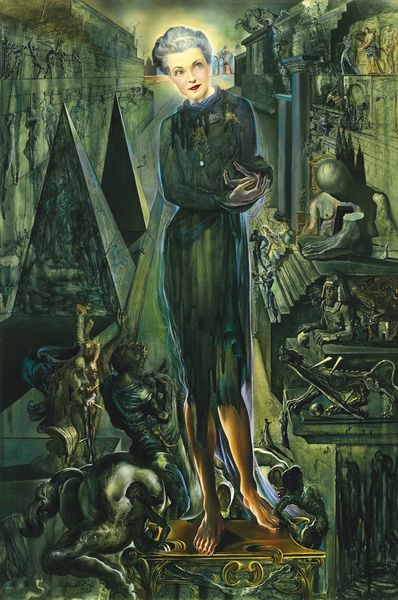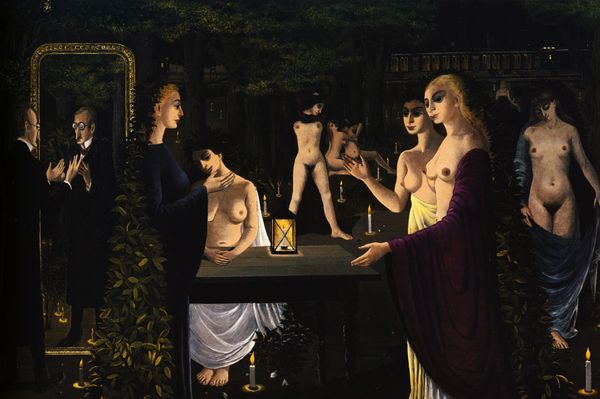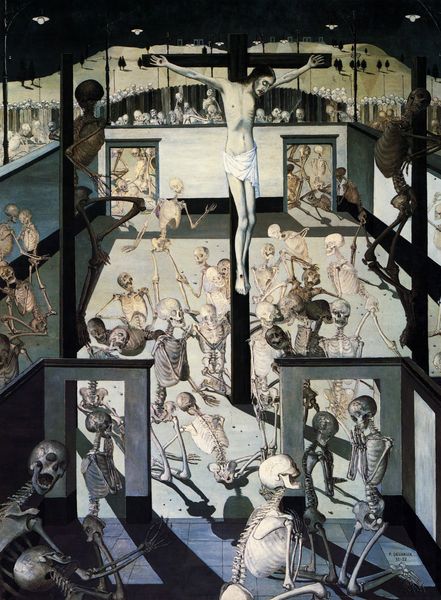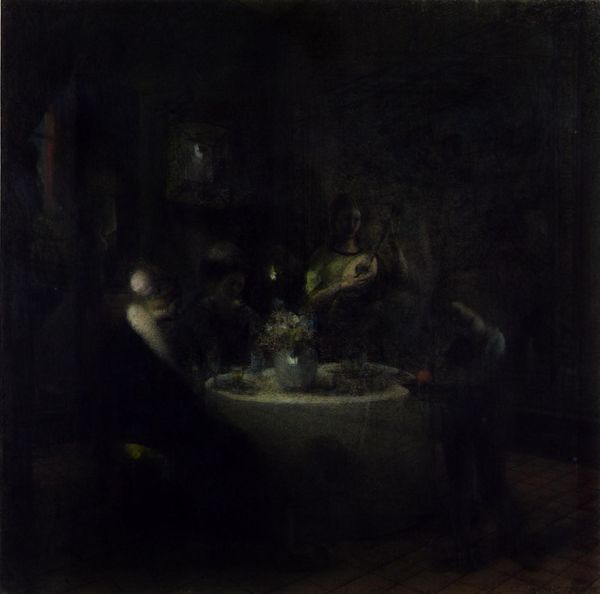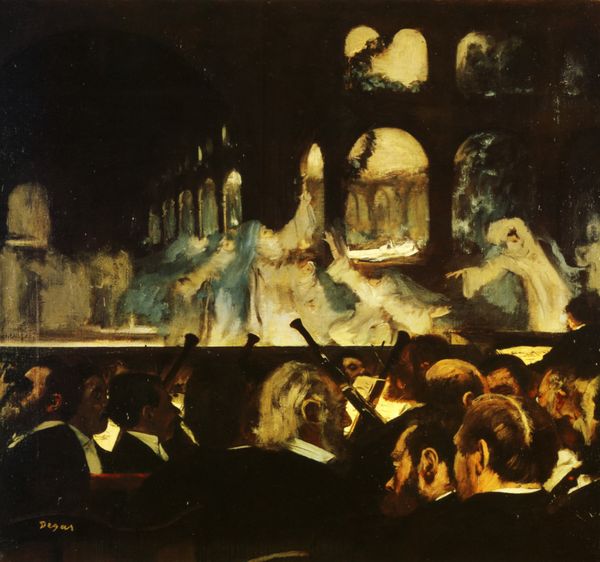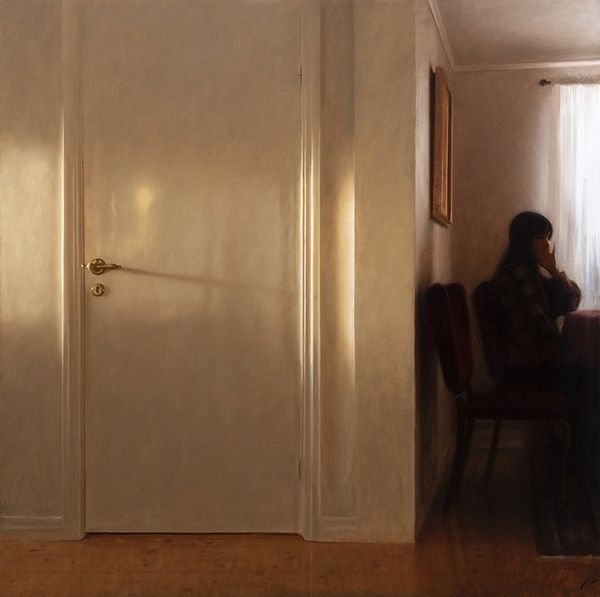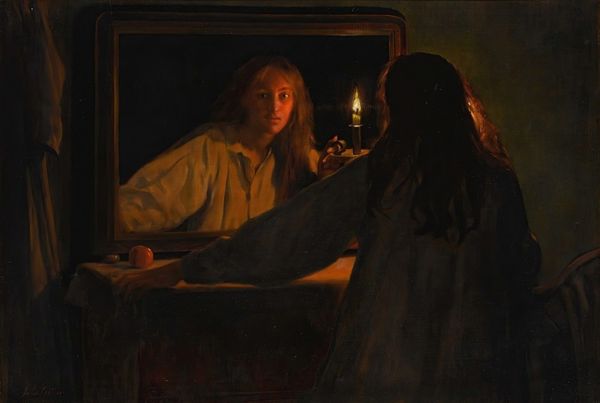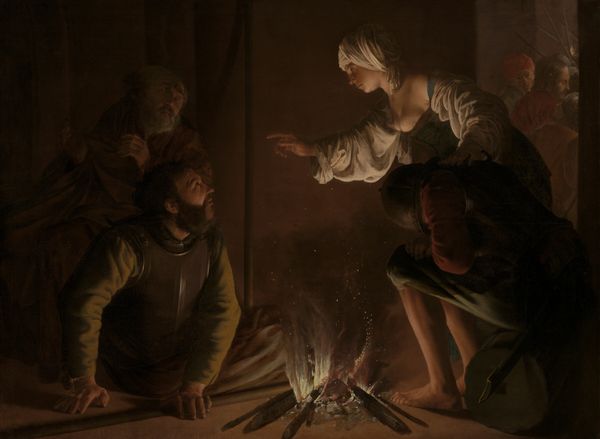
painting, oil-paint
#
painting
#
oil-paint
#
landscape
#
figuration
#
genre-painting
#
academic-art
#
nude
#
surrealism
Dimensions: 143 x 175 cm
Copyright: Paul Delvaux,Fair Use
Curator: Looking at Paul Delvaux's 1941 oil on canvas titled "Phases of the Moon II", one can immediately appreciate how he blends elements of academic art with surrealism. Editor: Whoa, instantly I’m getting a cinematic vibe, almost like a still from some artsy, existential horror film. It’s bathed in this muted, unsettling light—all the faces seem frozen, lost in thought, or maybe completely devoid of thought. And is that... a lunar landscape just beyond the doorway? What's that doing there? Curator: The painting deploys some stock symbols that became popular throughout the early 20th century, featuring a seated nude with a peculiar assembly of formally dressed men against an ambiguous landscape. It seems we’ve stumbled upon a modern exploration of genre painting. Editor: Genre painting, huh? That's an incredibly bloodless way to describe something so… odd! The stark contrast between the exposed vulnerability of the woman and the buttoned-up formality of the men really unsettles me, but perhaps there is something exciting happening? It's like a dreamscape dipped in twilight. There is clearly narrative in there, a drama to be explored further. What's the artist trying to say with this bizarre arrangement? Curator: It's likely a reflection of the anxieties present in Europe during the rise of the Second World War, exploring themes of voyeurism and a certain sense of alienation as society began facing unprecedented political transformations and threats. The nudity could symbolize a lack of defense, a stripping bare of the soul or the nation itself. Editor: Maybe. Or maybe it’s about the eternal dance between the exposed self and the masks we wear. But that moon… and those figures lurking. Delvaux is conjuring something primordial, hinting at desires or maybe even dooms we barely understand, let alone control. I find that both chilling and strangely alluring. Curator: He uses the visual language of surrealism to investigate the collective subconscious, and does so, tellingly, amidst growing unrest and devastation during wartime. But his particular surrealism—his deployment of earlier Academic styles of painting—distinguishes his exploration from that of others from the period. Editor: Absolutely, a weird collision of Victorian stuffiness with dream logic and pure weirdness! And it gets you thinking...What lunar phase are we each living in, right now? Heavy thoughts for a Tuesday! Curator: Well said! Thank you, our listeners, for taking the time to unpack the image, social history, and aesthetic power of "Phases of the Moon II". Editor: Don't let the moonlight scare you too much, goodnight.
Comments
No comments
Be the first to comment and join the conversation on the ultimate creative platform.
